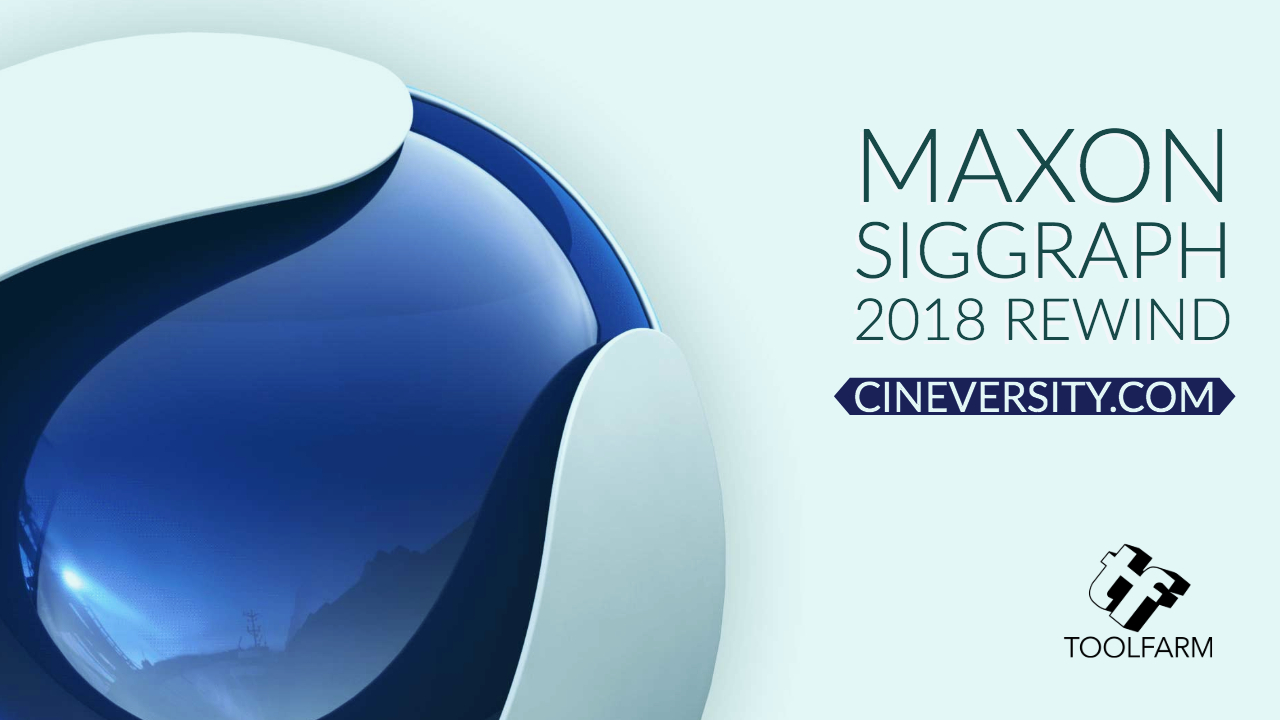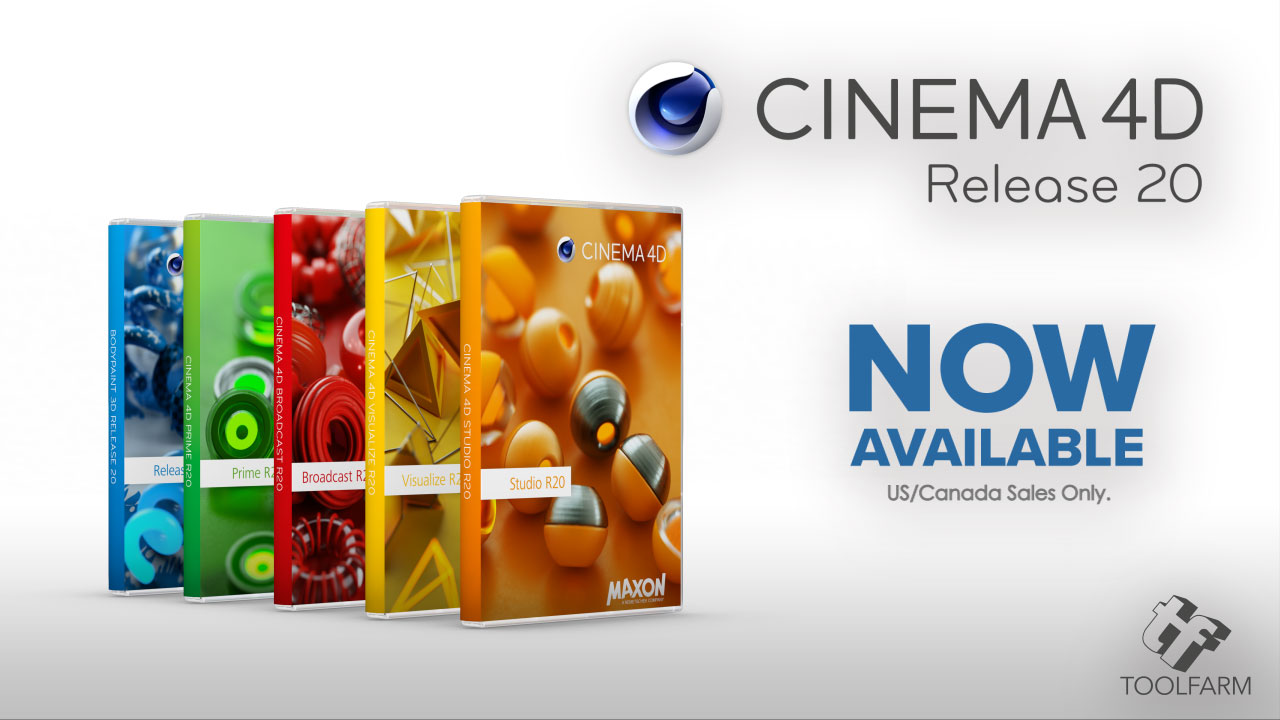C4D Live SIGGRAPH 2018 Rewind – Round 6

This is the sixth round of videos from SIGGRAPH 2018, held in August in Vancouver, Canada. Watch the fantastic presentations from Brandon Parvani, Matthew Encina, and Sekani Solomon, all presenting with Cinema 4D Release 20. All of the videos are also hosted at Cineversity.com.
- Brandon Parvini: Character Development and Animation Workflows in C4D
- Matthew Encina: Designing Cinematic Scenes
- Sekani Solomon: Creating the Short ‘Hidden’ Using Cinema 4D
Brandon Parvini: Character Development and Animation Workflows in C4D
Brandon Parvini demonstrates character animation and rendering techniques and workflows employed on the upcoming season of Adult Swim’s Dream Corp LLC. You’ll learn how Brandon and his team achieved a non-photorealistic rendering (NPR) or cartoon look using basic shaders and C4D’s standard render engine – primarily through the use of Oren-Nayer shading and specular lighting. You’ll also see techniques they use when animating characters for the show, including the use of Xrefs and the Surface Deformer. They also utilize iPi Soft to generate quick motion capture and a Character Object template which allows them to easily tweak and animate on top of the mocap animation.
08:33 NPR-style Shading Techniques
12:57 Trash Monster
17:59 Surface Deformer
20:05 Displace Deformer
28:52 Cloning Trash on the Character
38:59 Animating the Ogre with iPi Soft
45:04 Xrefs
54:43 Animating on top of MoCap
Matthew Encina: Designing Cinematic Scenes
Blind Creative Director and contributor to the Futur, Matthew Encina offers insight into the fundamentals for creating dynamic narrative sequences. You’ll learn basic lighting techniques, camera lens choices, and how to frame and find a shot. You’ll also see Matthew’s technique for assembling a shot sequence using Adobe Bridge.
07:15 Composition
13:37 Lighting
19:40 Contrast
21:38 Exercise 1 – Western Shootout
33:56 Assembling a Shot Sequence in Adobe Bridge
38:25 Exercise 2 – The Exchange
Sekani Solomon: Creating the Short ‘Hidden’ Using Cinema 4D
Sekani Solomon discusses the creation of his short film “Hidden” and explains how he achieved several of the shots within the film. He explains how to animate shattered crystals with Cinema 4D’s Voronoi Fracture and MoGraph tools. He also shows how the Time Offset feature of MoGraph effectors can be used to animate growing flowers along a path, and how he used PoseMorph to wrap chains around a figure. Sekani discusses his use of Redshift Proxy to optimize rendering, and some of the techniques he used to render realistic skin in Redshift. He also talks about creating cloth effects in Marvelous Designer.
03:45 Concept
06:54 Pre-Production
10:06 Style Frames
12:38 Crystal Voronoi Fracture
19:03 Flowers – Cloner, Time Offset, Redshift Proxy
25:19 Chains – PoseMorph
30:52 Face – Skin Shading, Displacement and Compositing
35:51 Cloth – Marvelous Designer
39:39 Coins
You heard right! Purchase Cinema 4D R20 is Now Available!
Some new features in R20:
- MoGraph Fields – Offer unprecedented content creation possibilities to the procedural animation toolset in MoGraph. The Fields feature in Cinema 4D R20 makes it possible to efficiently control the strength of the effect using any combination of falloffs – from simple geometric shapes to shaders and sounds to objects and mathematical formulas. Fields can be mixed and combined with one another in a layer list. Effects can be re-mapped and grouped in multiple Fields to control Effectors, Deformers, weights and more.
- Volume-based modeling – The OpenVDB-based Volume Builder and Mesher in Cinema 4D R20 offer an entirely new procedural modeling workflow. Any primitive or polygon object (including the new Fields objects) can be combined to create complex objects using Boolean operations. Volumes created in R20 can be exported sequentially in OpenVDB format and can be used in any application or render engine that supports OpenVDB.
- Node-based material system – More than 150 different node-based shaders offer customers a new and streamlined workflow to quickly and conveniently create shading effects from simple reference materials to highly complex shaders. The existing standard material system’s interface can be used to get started with the new node-based workflow. Node-based materials can be made available as parametric assets with a reduced interface.
- CAD Import – Cinema 4D R20 offers seamless drag and drop import for common CAD file formats such as Solidworks, STEP, Catia, JT, and IGES. The scale-based tessellation feature of the import function offers individual control of the level of detail for impressive visualizations.
- ProRender improvements – The GPU-based ProRender in Cinema 4D lets customers utilize the power of the GPU to create physically accurate renders. In R20, key features such as Subsurface Scattering, motion blur, and multi-passes are now available. Other enhancements in ProRender include updated code, support for Apple’s Metal2 graphics technology and the use of out-of-core textures.
- Core Modernization – The modernization efforts of the Cinema 4D core architecture and foundational technologies MAXON announced in 2017 are now more tangible and mature in Release 20. This is marked by a series of significant API adaptations, the new node system, and the modeling and UI framework.
Posted by Michele
